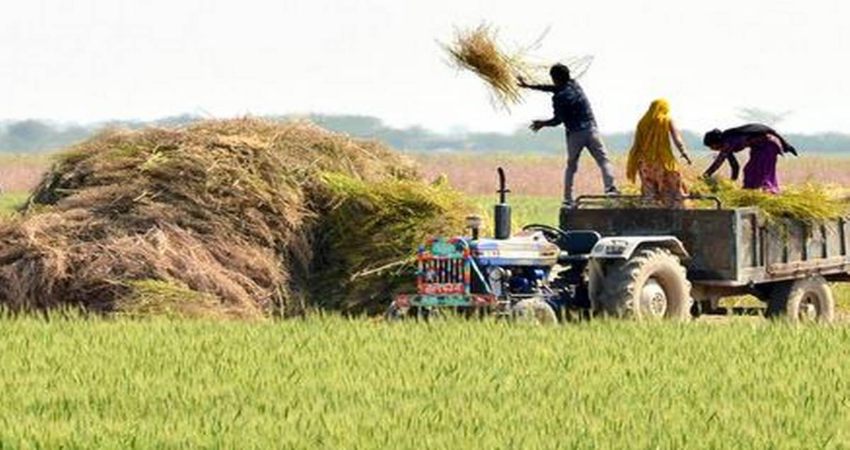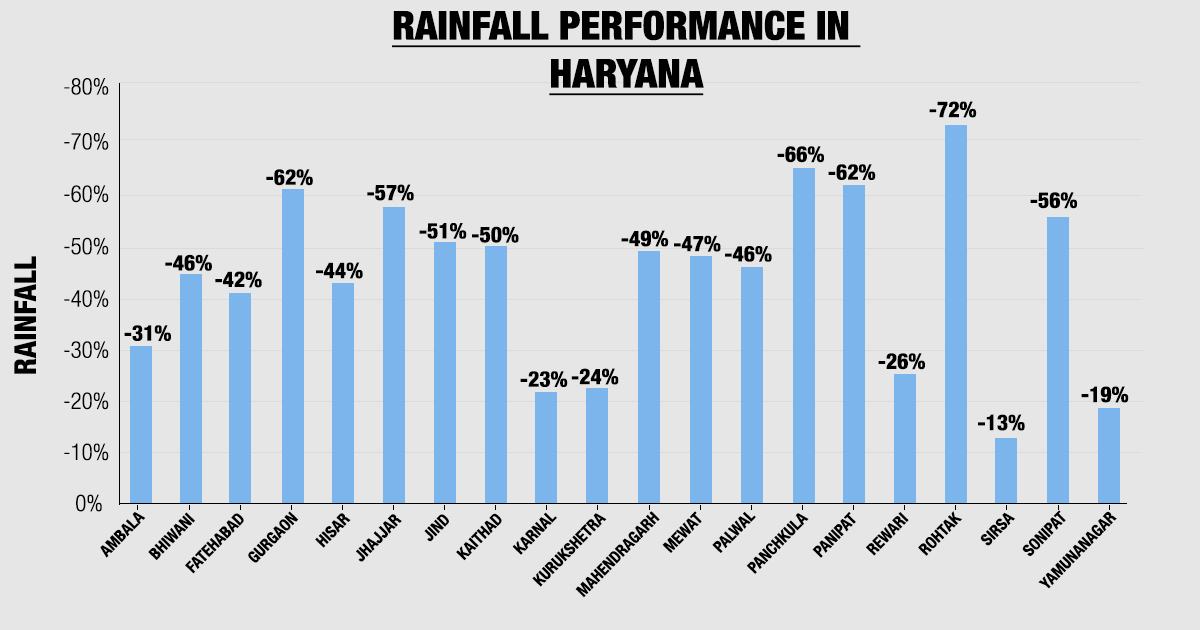 The Southwest Monsoon this year has been a little astray. Agrarian pockets that were supposed to receive fewer amounts of rain have been flooded while regions, where good rain was likely, are staring at a deficit.
The Southwest Monsoon this year has been a little astray. Agrarian pockets that were supposed to receive fewer amounts of rain have been flooded while regions, where good rain was likely, are staring at a deficit.
In fact, during the start of the Monsoon season in June until the end of July - halfway through the season - all the four subdivisions of the country were observing deficient rains. East and Northeast India was staring at a rainfall deficit of 11%, while the deficiency in Northwest and Central India stood at 8% and 5%, respectively. The southern peninsula was witnessing a huge deficit of 19%.
Less rain in the first two months delayed the sowing of paddy crop in several states like Bihar, Uttar Pradesh, Odisha and Andhra Pradesh. And those who did want to catch up with the timely sowing had to switch to costlier means like pumping sets. Crops like cotton and soybean also bore the brunt of poor rain in these initial Monsoon months.
This scenario changed completely with the start of August month. And by September 26 the Southwest Monsoon had a completely different story to tell. The pockets that were deficient either turned normal or excess.
According to the rainfall data available with Skymet from June 1 to September 26, the subdivision of Central India is excess at 26% from being deficient by 5%. South India that was deficient by 19% moved on to become surplus by 17%. Rainfall in Northwest India remained unchanged at an 8% deficiency, while East and Northeast India saw the deficiency climb to 16%.
This period has again proved tough for farmers as heavy rains in Madhya Pradesh, Gujarat parts of Maharashtra in Central India have caused extensive damage to soybean and cotton crops. On the other hand, less rain in Haryana, Punjab, Bihar and Uttar Pradesh is likely to affect the food grain production.
The deficiency in East Uttar Pradesh and Bihar stand at 15% and 18%, respectively. While Haryana is dry with rainfall deficiency at a whopping 43%. Out of the 20 districts in Haryana, only Sirsa and Yamunanagar have observed normal rains of 13% and 19%, respectively.

So it has clearly been an erratic Monsoon season for India this year. And for agriculture, it has proved to be a boon for some and bane for others.
Image Credit: The Hindu Business line
Any information picked up from here should be attributed to Skymet Weather




